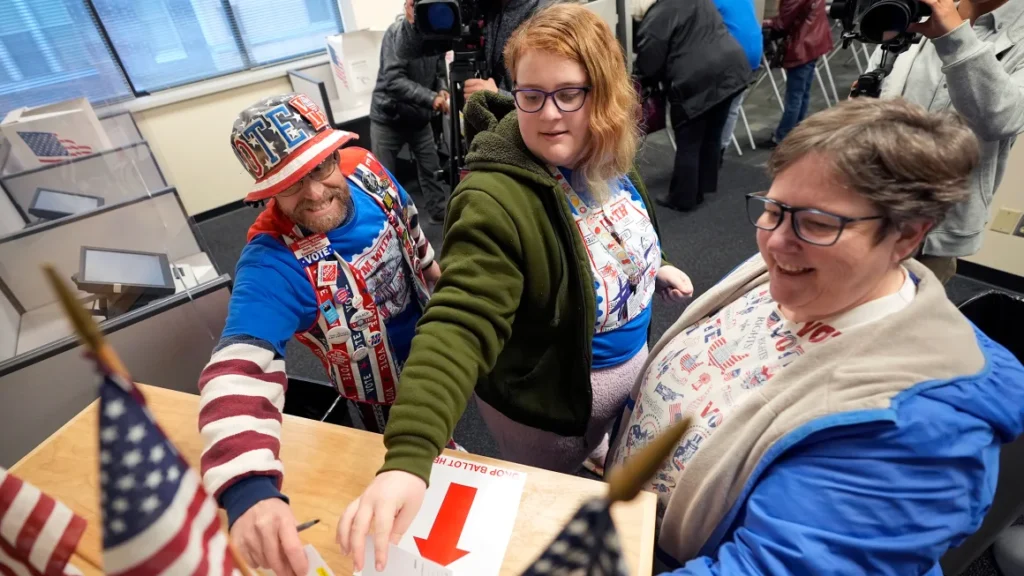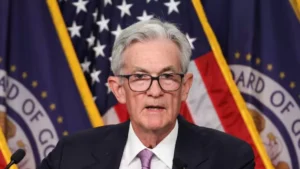
Record voter turnout is capturing headlines as Americans turn out in unprecedented numbers for the 2024 election. With early data suggesting one of the highest participation rates in modern history, this surge reflects a renewed sense of civic duty and engagement among U.S. voters.
Record Voter Turnout: A Landmark in Civic Participation
Across the United States, voter turnout has surged to levels not seen in decades, making this election a milestone for American democracy. Early voting data has pointed to a significant rise in participation, with millions casting their ballots through mail-in and early voting options even before Election Day arrived. Experts attribute this increased voter engagement to a combination of high-stakes issues on the ballot, increased accessibility through expanded voting options, and the energized efforts by advocacy groups encouraging turnout.
Factors Contributing to Record Voter Turnout
This record voter turnout didn’t happen by accident. It’s the product of several critical factors, each playing a role in shaping this election season’s high engagement:
High-Stakes Issues Drive Participation
With pressing issues such as healthcare, economic stability, climate change, and reproductive rights at the forefront, voters have shown a strong motivation to make their voices heard. Voter engagement is notably high across diverse demographic groups, reflecting a collective desire to influence the direction of U.S. policies on these and other significant issues.
Expanded Voting Options Encourage More Participation
Several states have made it easier to vote through early voting, mail-in ballots, and extended polling hours, providing more flexibility for voters. The accessibility improvements have encouraged individuals who may otherwise face barriers to voting, including those with disabilities, work commitments, or other responsibilities. As a result, record voter turnout has been facilitated by policies aimed at making voting a more inclusive and convenient process.
How Record Voter Turnout Affects Election Outcomes
Higher voter turnout has traditionally been associated with more representative election outcomes. When more people vote, elected leaders reflect a broader cross-section of the population, often resulting in policies that address the needs of a wider demographic range. The record voter turnout seen in this election is expected to yield results that are more representative of the American electorate’s priorities.
Record Voter Turnout and Policy Implications
Given the widespread participation in this election, policy decisions made by the new administration may shift to address issues prioritized by this broad and diverse voter base. Leaders are likely to face pressure to respond to the concerns of groups who may have been underrepresented in past elections. This shift could mark a change in both the tone and content of U.S. governance in the years ahead.
The Role of Grassroots and Advocacy Campaigns
Grassroots organizations, voter advocacy groups, and community leaders have contributed significantly to boosting turnout, especially among historically underrepresented groups such as young people, people of color, and low-income individuals. These efforts were aimed at raising awareness, providing educational resources, and addressing any challenges that potential voters faced in the registration and voting process.
Record Voter Turnout Boosted by Civic Initiatives
From registration drives to door-to-door canvassing, civic organizations have mobilized large numbers of volunteers to ensure people have the information and resources necessary to vote. Digital campaigns, social media, and local events have also played a vital role in educating voters and providing real-time information on voting options, deadlines, and processes.
The Importance of Voter Education in Record Voter Turnout
This election season highlighted the need for robust voter education. Misinformation and confusion about voting procedures have often deterred participation, but this time, concerted efforts from both nonprofit organizations and government agencies have focused on combating misinformation and clarifying voting procedures. Educating voters has proven to be a crucial element in driving record voter turnout, with digital and in-person education initiatives helping ensure that voters feel confident in the voting process.
Record Voter Turnout Driven by Digital and Social Media Campaigns
Social media platforms and digital campaigns became essential tools in reaching a wide audience, particularly young voters and first-time participants. These platforms allowed organizations to provide timely updates, fact-check information, and answer questions in real-time. With record voter turnout, the impact of these digital outreach efforts is evident, showcasing the growing role of technology in shaping civic engagement.
What Record Voter Turnout Means for Future Elections
Record voter turnout not only marks a historical moment for this election but also sets a precedent for future elections. This level of engagement could lead to sustained participation as voters become accustomed to the options and resources that made voting more accessible. Moreover, political candidates and parties may increasingly prioritize addressing issues that resonate with a more diverse and actively engaged voter base.
Lessons from Record Voter Turnout for Political Strategies
As political campaigns analyze the factors driving this year’s voter engagement, it’s likely that future election strategies will focus on accessibility, voter education, and addressing issues important to underrepresented groups. Record voter turnout reinforces the importance of outreach and engagement, encouraging political leaders to prioritize policies that reflect the electorate’s evolving concerns and values.
Conclusion: Record Voter Turnout as a Win for Democracy
The record voter turnout of the 2024 election exemplifies a robust democratic process in action. It reflects a country that is deeply invested in its future, determined to participate actively in shaping policies and leadership. From accessibility improvements to community-led initiatives, the factors that led to this historic turnout will likely influence future election processes and strengthen democratic engagement across the country.
As Americans continue to seek out opportunities to make their voices heard, this year’s turnout demonstrates that, when given the chance, voters are ready to participate in building a government that reflects the diverse and evolving face of the nation. This unprecedented engagement signals a stronger, more inclusive democracy, offering hope for continued participation in the years to come.
image credit – Charlie Neibergall/AP


